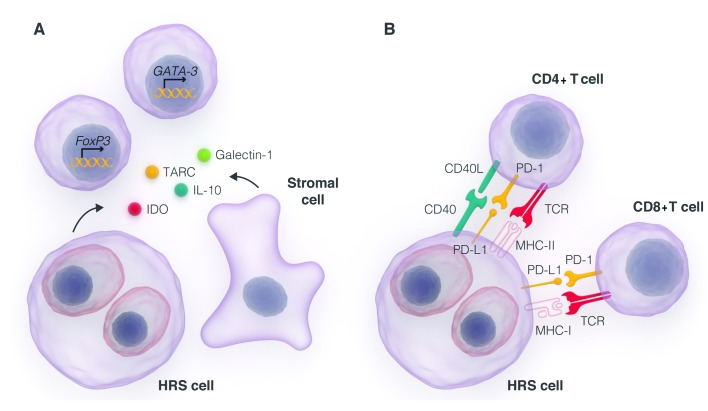Figure 1.
Suppression of anti-tumor T cell responses by the CHL microenvironment. (A) RS cells and stromal cells secrete cytokines, chemokines, and other soluble immunomodulatory factors, such as IL-10, CCL17/TARC, galectin-1, and indoleamine 2,3-dioxygenase (IDO) which both recruit Th2 and regulatory CD4+ T cells and favor the differentiation of tumor-infiltrating T cells into regulatory and Th2 cells via the induction of lineage specific transcription factors Gata3 (Th2) and FoxP3 (Treg). (B) RS cells evade recognition by CD8+ and CD4+ T cells by downregulating expression of MHC-I and MHC-II in the majority of cases. They also express ligands that activate negative regulatory receptors present on T cells, such as PD-1. Conversely, RS cells are able to derive growth signals from CD40L, which is present on the majority of T cells within the microenvironment and activates CD40 on RS cells, driving NF-κB signaling and RS cell proliferation.

